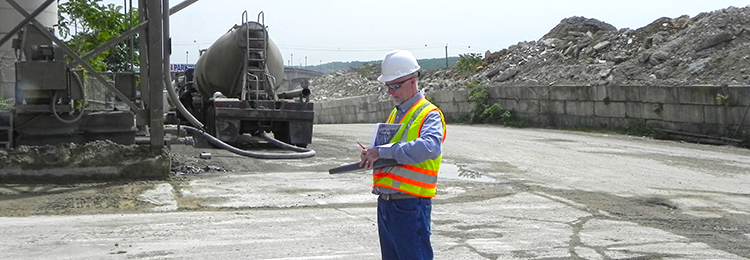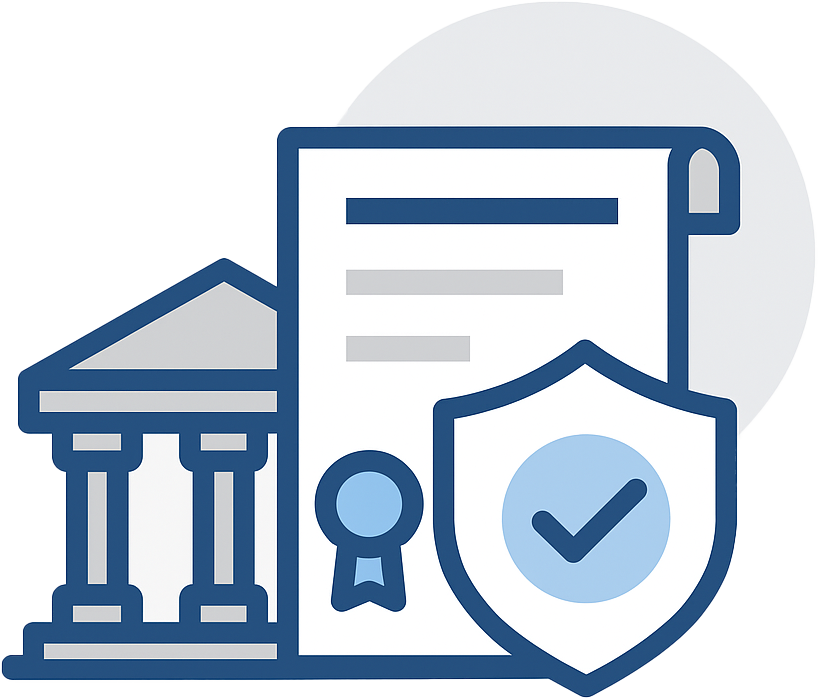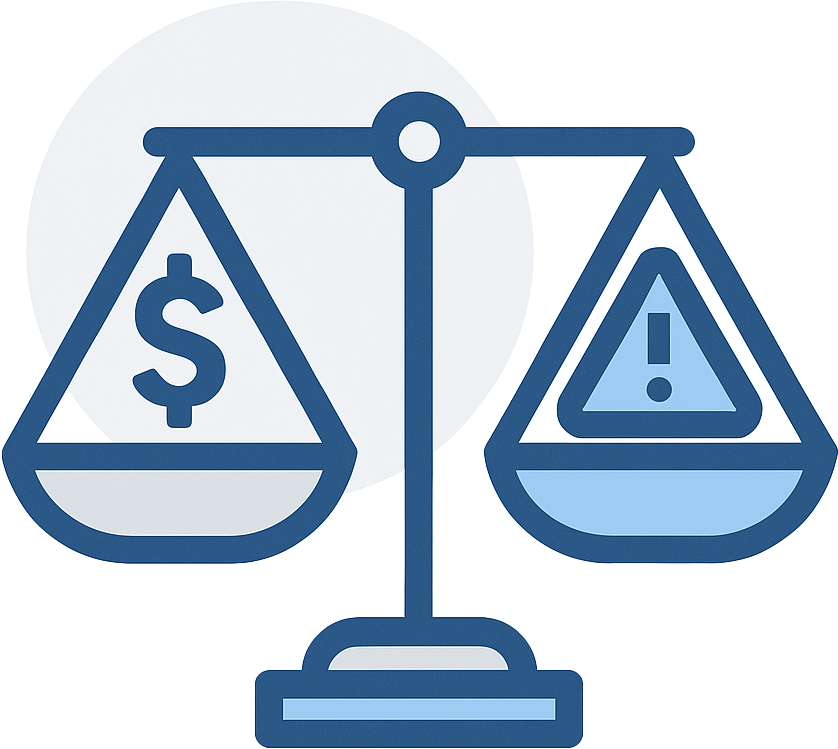Understand what an environmental audit is, what a Phase I ESA is, and the key differences between them.
The other week we got an email from one of our newer customers. They were ready to sign up for 3 Phase I ESA reports at a couple of locations, one of which was an industrial facility. They wanted to know when the Phase I's would take place, and what they needed to provide for the compliance evaluation side of the report. I politely let them know that a standard Phase I does not include a compliance evaluation, also known as an environmental audit, but we would be happy to revise the proposal to include one. After a few minutes of explanation the folks on the other end got the difference, and realized they are in fact very different items.
I'd love to say that this was the first time we've run across this misunderstanding, but the reality is many people don't know the difference between an environmental audit and a Phase I. If you're outside the world of environmental compliance, aren't an environmental manager, or this is just your first foray into something like this, it's completely understandable that folks would run into this problem.
Fortunately, we've done our best to reproduce what we discussed with those customers on the folks the other week, and can hopefully explain the difference to you here.

The differences between Phase I Environmental Site Assessments & Environmental Audits.
We're not going to go super heavy into these topics since they're both pretty intricate and require some detailed information, but let's go over some of the basics.
What are Phase I Environmental Site Assessments?
The simplest explanation is that Phase I's are looking for recognized environmental conditions at a property. These recognized environmental conditions, or RECs as they're commonly called, are more or less the presence, or potential presence of contamination at, on, or near a piece or property. Usually contamination is either from petroleum or hazardous chemicals or materials which can be either from the current use, or the past use of the property.
This is done to provide a baseline against the future liability of site conditions. Or simply put, it's proving your property is either contaminated or not, so incase anything in the future is "found" on or near your property, you can prove it's not your doing. It's sort of like insurance proving you did your due diligence and checked to make sure the property was clean before you either purchased or refinanced it.
Phase I's follow a fairly standardized methodology meant to answer certain questions as per ASTM standards. Meaning, we're not calling the shots on what's included, there's standards in placing saying what must be done in the process. Here's some more baseline information about them:
The Phase I ESA Process.
This is pretty standard, and to be crystal clear, a standard Phase I does not include an audit or compliance evaluation.
For instance, phase I's can only be conducted by an "environmental professional", or folks under the guidance of an "environmental professional". The same ASTM standards that dictate what happens in a Phase I also dictate the qualifications one must possess to be an environmental professional. I won't go into what the qualifications are, but suffice to say they're fairly strict, and not just any random person off the street can do them.
There's a normal process to go through, which involves reviewing historical records, applying for information from government agencies (also known as Freedom of Information Act requests), conducting interviews with personnel at the property, and a thorough site investigation. After all this happens, the environmental professional reviews everything, compiles a report, and gives their opinion on the property. If they find any issues, or RECs, they may suggest a Phase II Environmental Site Assessment. Here's some additional articles going over this stuff.
Like I just mentioned above, Phase I's are usually done either for someone looking to buy or refinance a property. These are done buy the buyer or refinancer to prove that the property they're looking at is a worthwhile investment, or something they can successfully refinance. If you're buying a property for cash, you don't need to do this since there's no bank involved. However, if you're dealing with a financing institution, you're definitely going to need one. Banks always require one since they're putting their money on the line. So, do you need one? If you're dealing with a financing institution, absolutely yes. If you're buying something privately, then no you don't need one, but you'd be a fool not to get one. Your report is usually shared with a bank, legal counsel, or anyone else on the buying side of the transaction. You do not need to share this with the seller. It's your report, you can do whatever you want with it. Here's some additional info:
And lastly, the million dollar question is what do they cost. Short answer is: it depends, but they generally run between $1,500 and $7,500. Some are cheaper, some are more expensive. You can read more about it here:
Better yet, use the calculator below to estimate your cost!
What are environmental audits?
Audits are a completely different beast. Environmental audits are typically used to assess the level of environmental compliance at a facility. Simply put, audits check that your operation is following all the environmental law, rules, and regulations that it should be.
Audits should be done periodically to assess how a facility is doing with complying with laws and regulations, as they do tend to change from time to time.
The end goal of an audit is to prove that you're in compliance, or determine that you need to do something to get up to speed with regulations. Ultimately, if you're out of compliance, you'll want to develop a plan for improving operations or addressing any deficiencies found.
The Environmental Audit Process
This is going to depend on why and who is doing the auditing.
For instance, if your environmental manager does an annual audit of your environmental program, it's likely for internal purposes only. Conversely, if you're hiring an outside firm to audit your facility because you've gotten in trouble with a regulatory agency, chances are the audit is going to be more in-depth. And lastly, if you're getting an audit because you're using an environmental management system and you need to ensure you're meeting the terms of your EMS, then your audit might be conducted in a different manner.
The point I'm trying to make is that unlike Phase I reports, environmental audits is a loose term and there is no right or wrong way to get an audit. You could use your environmental manager or hire an outside firm, it all depends on what you're getting an audit for. Obviously you'll want someone knowledgeable in the field, but there's no specific requirements of who you have to hire.
Since there's no specifics, audits can be as wide or narrowly defined as you'd like. If you want an audit specifically for evaluating your compliance with solid waste regulations, you can do that. If you want an audit for all state specific environmental regulations, you can do that as well. Depending on what you want, the audit can take on a very different appearance.
Audits, depending on their purpose, can be completed for a variety of end users. We frequently conduct audits for legal council, since anything discovered can be protected via attorney-client privilege. Most audits that we complete are kept behind closed doors to keep the owners and operators of the facility safe from prosecution for any less than ideal findings.
And lastly, unless you're complying with your environmental management system or you have to complete one because of a regulatory requirement, you don't 'need' an audit.
I wish I had a few more articles for you to digest on the topic, but here's what we've go so far about audits:
Environmental audits are not the same as Phase I Environment Site Assessments.
I hope this clears some of the confusion up about these two very different forms of environmental due diligence.
They’re close, but they are really apples and oranges.
Making sure you know what you want and what you’ll be using the results for is critical, otherwise you’ll spend money on something that might not only waste your time, but might also not be what you need.
For more information, click here to contact us or give us a call at 609-693-8301.











